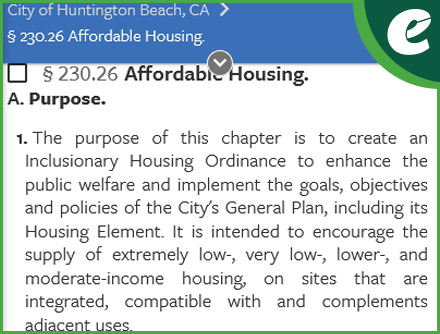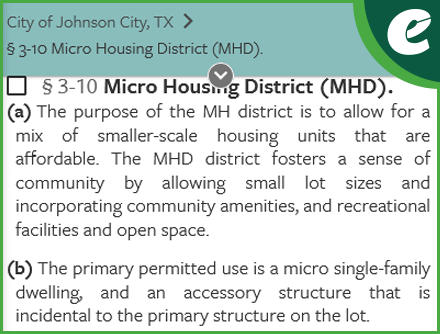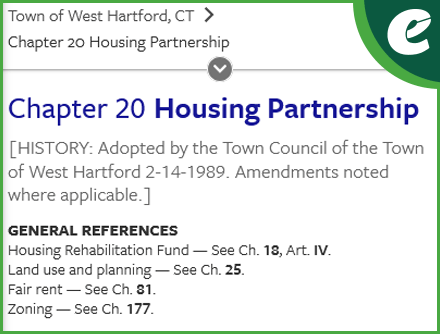Across the country, cities and towns are taking bold steps to ensure that affordable housing isn’t just a goal — it’s a reality. Through smart legislation and creative mandates, municipalities are helping to reshape the housing landscape in a way that promotes inclusivity, diversity, and long-term sustainability.
Room for All: The Rise of Inclusionary Zoning
Think of inclusionary zoning (IZ) as a win-win policy: it requires (or incentivizes) developers to set aside a portion of new housing units as affordable while still allowing room for market-rate development. These policies often require 10–30% of new units to be designated for low- and moderate-income families, helping to create communities where everyone can thrive.
This strategy fosters economic diversity and helps prevent the concentration of poverty. It’s a tool that cities like Portland, Washington D.C., and Denver have used to great effect.
View sample affordable housing mandates legislation >
The Big Apple’s Bold Move: NYC’s MIH Program
New York City is leading by example with its Mandatory Inclusionary Housing (MIH) program. This initiative seeks to ensure that affordable housing is a permanent part of new developments in rezoned areas. Depending on the option chosen, developers must dedicate 25–30% of residential floor area to residents earning between 60–80% of the Area Median Income (AMI).
The city’s commitment to affordability is central to its long-term growth strategy. Details on this transformative policy are available via NYC Planning.
Shortcut to Solutions: Massachusetts’ Chapter 40B
Massachusetts offers another powerful tool with Chapter 40B, also known as the Comprehensive Permit Act. This policy streamlines the approval process for developers who include 20–25% affordable units, helping projects move forward more quickly in communities where affordable housing is in short supply.
The law has helped thousands of units move from plan to reality—and it’s one of the oldest and most influential affordable housing tools in the country.
Bonus Round: California’s Density Boost
In California, the state’s Density Bonus Law rewards developers who include affordable housing by allowing them to build more units than zoning laws would normally permit. It’s considered a smart way to align incentives with community needs — and it’s reportedly making a real impact in places like Los Angeles and San Diego.
Innovation in Action: Cities Thinking Outside the (Zoning) Box
Affordable housing doesn’t have to mean compromise — it can mean creativity. Here are a few standout examples of how municipalities are embracing fresh approaches:
- Albany, NY reduced parking requirements and sped up permitting processes to help affordable housing developers get to work faster.
- West Hartford, CT created The Camelot, a 100% affordable development that brings stylish, energy-efficient apartments to families at a variety of income levels.
- Fairfield, CT secured a moratorium from its state’s 8-30g law after demonstrating real progress toward its affordable housing goals—proof that steady progress pays off.
The Upside of Mandates: Encouragement That Works
While some developers may initially recoil at requirements, municipalities are increasingly finding that with the right mix of flexibility and support — such as tax incentives, density bonuses, or expedited permitting — affordable housing mandates can become an attractive proposition.
In fact, research from Housing Matters shows that mandatory inclusionary zoning policies are significantly more likely to result in affordable units than voluntary programs.
What’s Next? A Foundation for the Future
Affordable housing isn’t just about numbers — it’s about people, families, and the strength of our communities. By passing thoughtful legislation and collaborating with developers, municipalities are laying the foundation for a more inclusive future.
With continued innovation, public-private partnerships, and a shared commitment to accessibility, cities across the country are proving that a thriving housing market can make room for everyone.
Useful examples of affordable housing mandates legislation from the eCode360® Library
If your municipality is looking for ways to enact or update ordinances to require more affordable housing to be built in your community, you’ll find valuable examples in our eCode360 Library, including:
Is your code on a schedule?
Did you know you can set up a regular update schedule, so you don’t have to worry about compiling materials or taking up time and resources of your staff to do the updates yourself? As your municipality passes legislation, send it to General Code and we’ll take care of the rest. It’s just that simple!
For tips that will allow us to process your code updates most efficiently, click here.
Questions about updating your code?
Our Client Care team is available to explain the options and benefits of scheduled code updates or any other code-related questions you might have.
Sources:
- Inclusionary Zoning
- Housing And Health: The Role Of Inclusionary Zoning
- Strategies to Minimize Displacement: Inclusionary Zoning
- Everything You Need to Know About Mandatory Inclusionary Housing but Were Afraid to Ask
- California Density Bonus Law
- NYC Planning: Mandatory Inclusionary Housing
- What Is Area Median Income?
- MASS.Gov: Chapter 40B Planning and Information
- MASS.Gov: Comprehensive Permit Information
- Massachusetts Comprehensive Permit Act: Chapter 40B
- Albany Common Council Overrides Housing Veto
- Inside The Camelot: West Hartford’s new 100% affordable housing development is ready to open
- CT grants Fairfield a four-year pause on state statute 8-30g, halting its affordable housing mandate
- How Can Zoning Policy Design Promote Affordable Housing?
- eCode360® Library






